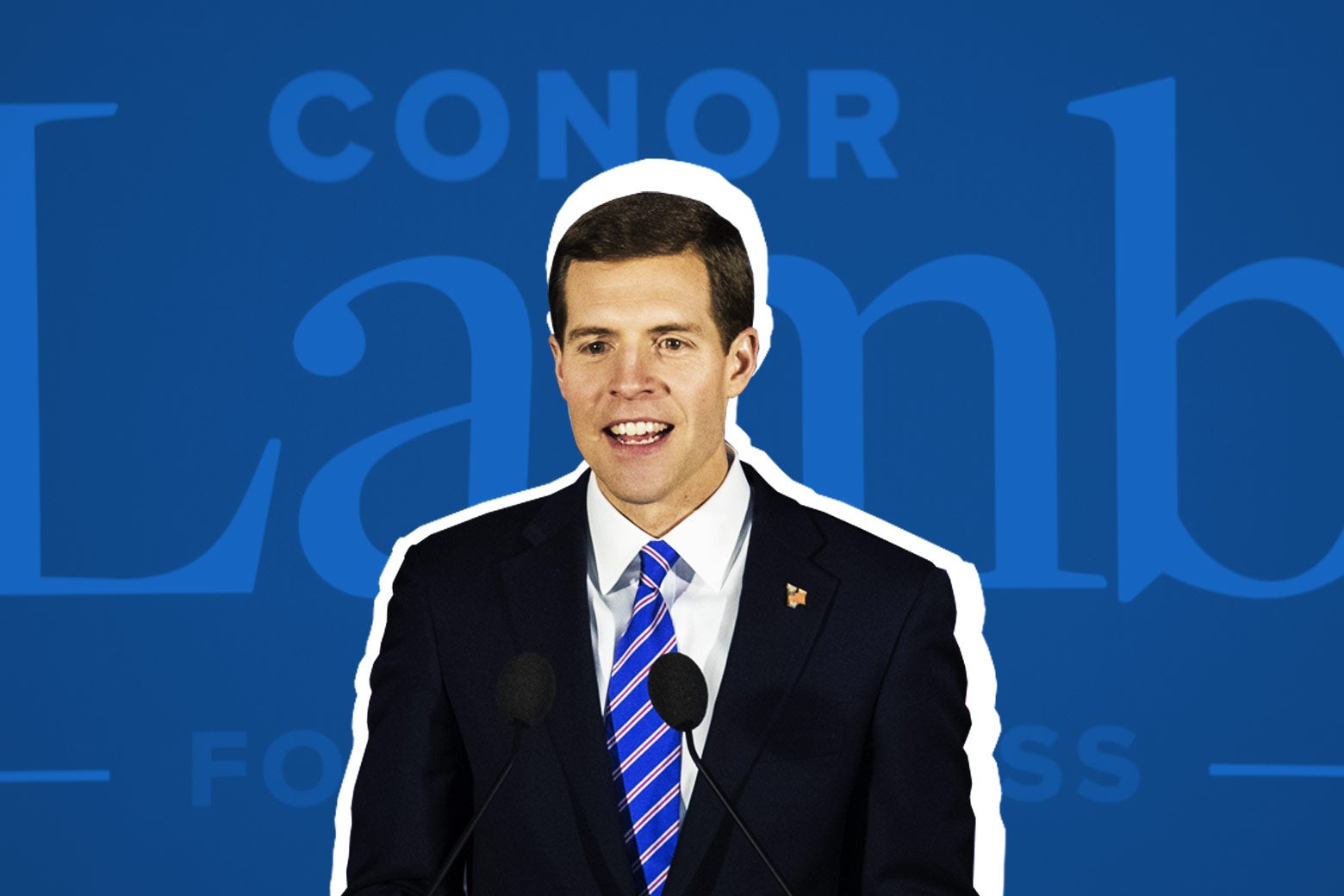With a slim margin of just a few hundred votes, Conor Lamb is the presumptive winner of the special election in Pennsylvania’s 18th Congressional District. Lamb’s victory—an upset on the order of Doug Jones’ win in Alabama—is important for bolstering Democratic morale and recruiting strong candidates to run in similarly deep-red districts.
It’s also a disaster for Republicans, who tried every possible message to derail Lamb’s momentum. A world in which Democrats can close the gap in a district as conservative as PA-18—despite $10 million spent against their candidate—is a world in which Democrats have a decisive advantage in November.
Although staunchly Democratic through the 20th century, the rural and suburban counties that make up the 18th District took a hard turn toward the Republican Party in 2008, casting 55 percent of their votes for John McCain, 58 percent for Mitt Romney, and 58 percent for Donald Trump. Several counties in the district broke especially hard for Trump in the 2016 election: Westmoreland County went 64–33 for the president while Greene County was 70–28.
Gerrymandered to cement the GOP’s advantage, the seat has been held by Republican Tim Murphy from 2003 with little opposition. Democrats didn’t even field a candidate for House in the 2014 and 2016 elections. When Murphy resigned in 2017, following reports that the anti-abortion congressman had encouraged his mistress to terminate her pregnancy, his prospective replacement, state Rep. Rick Saccone, was expected to coast easily into Congress.
But Lamb turned out to be a strong, well-funded candidate who fit the district: He disavowed Democratic leader (and conservative bête noire) Nancy Pelosi and pledged to work with President Trump when it would help the district. That performance was only possible because of an intensely negative national environment for the GOP, fueled by Trump’s antics in Washington.
What should concern Republicans is that no amount of money seemed capable of reversing that negative opinion. National Republican and conservative groups sank more than $10 million into PA-18, dwarfing outside spending from liberal and Democratic groups. But it wasn’t enough to beat back the discontent and secure Saccone’s victory.
This tells us a few things. First, that the massive swings seen in last year’s special elections weren’t an aberration. Overall, Democrats have exceeded Hillary Clinton’s margin in 70 percent of the 90 special elections held since last year, with an average improvement of 13 points. In the average federal election, Democrats have outperformed their baseline by 16 points. Lamb beat Hillary Clinton’s 2016 performance by 20 points. Even if he doesn’t win, his performance is a major reversal that bodes well for Democrats in the dozens of House districts that are less conservative than PA-18.
Lamb’s tentative win is also evidence that—with the right candidates—Democrats can win back some of the white working-class voters that drifted toward Trump in the 2016 election, and perhaps craft a coalition of more traditional Democrats, suburban liberals, and disaffected Republicans.
Lamb’s performance also demonstrates how vital union support is for Democrats running in white, blue-collar Trump country. Lamb, who ran as a staunch defender of Medicare and Social Security, engaged heavily with the United Mine Workers and won their support after he promised to back legislation that would fund their pensions. Lamb downplayed his connection to the national Democratic Party and elided differences on cultural issues, but he pulled in Trump-voting Democrats by promising a robust defense of popular safety net programs.
It’s still far too early to make predictions about November’s elections. But the signs of a so-called blue wave are here. Liberal Democrats are clearly ready to ride it to power, and—with Conor Lamb–type candidates running across the country—so are their more moderate counterparts.
